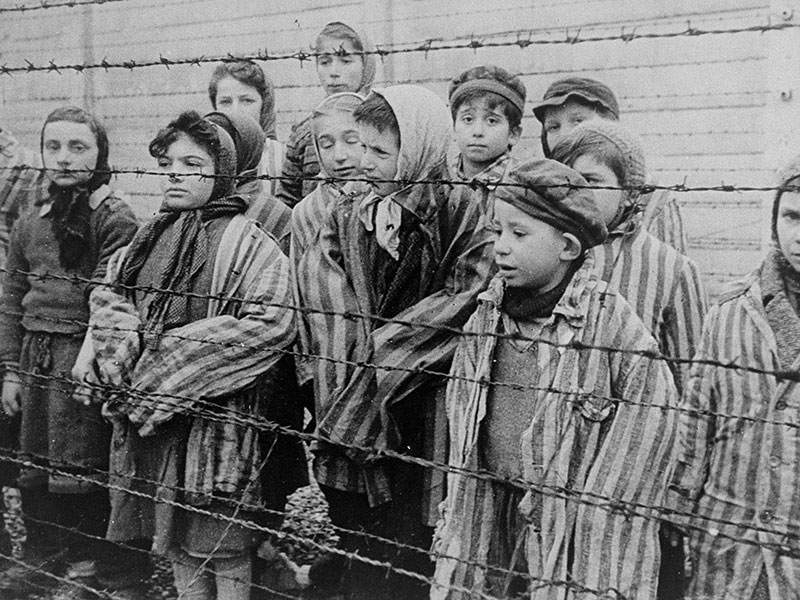Table of Contents
Books for Middle-Grade and Older Readers
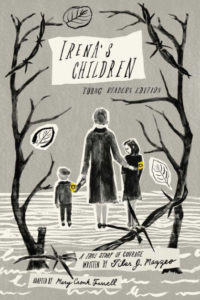 |
Irena’s Children by Tilar J. Mazzeo (Gallery Books, 2017) is a detailed account of the life of Irena Sendler – sometimes called “the female Oskar Schindler” – for adults. There’s also a Young Readers edition of the book for ages 10 and up. |
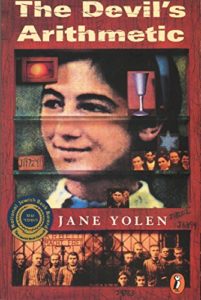 |
In Jane Yolen’s The Devil’s Arithmetic (Puffin, 2004), young Hannah Stern, bored with her family’s stories of the Holocaust and dismissive of family history, is suddenly transported back in time to Poland in 1942, where she finds herself in a concentration camp. For ages 10 and up. |
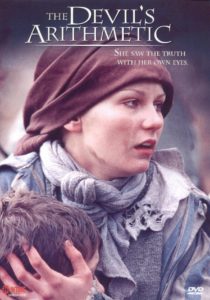 |
The movie version of The Devil’s Arithmetic (1999) stars Kirsten Dunst as Hannah. Not rated, but includes intense and disturbing scenes.
|
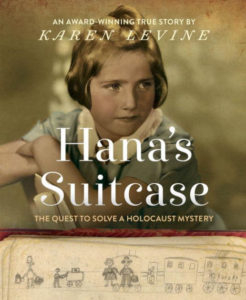 |
Karen Levine’s nonfiction Hana’s Suitcase (Crown, 2016) is the story of the investigation of a Holocaust mystery which began when the curator of a Holocaust education center in Tokyo received an empty suitcase from the museum at Auschwitz. Painted on the side were the words “Hana Brady, May 16, 1931, Orphan.” The book alternates between the modern-day quest for Hana and Hana’s life in World War II Czechoslovakia which ended tragically at the Auschwitz concentration camp. For ages 10 and up. |
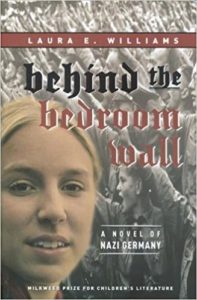 |
In Laura E. Williams’s Behind the Bedroom Wall (Milkweed Editions, 2005), set in Germany in 1942, thirteen-year-old Korinna is an active member of her local Nazi youth group and a passionate believer in Hitler. Her parents, however, are members of the underground and are concealing a Jewish refugee family behind the wall in her bedroom. When Korinna discovers them, her sympathies gradually change – and her new beliefs are put to the test when someone tips off the Gestapo. For ages 10-14. |
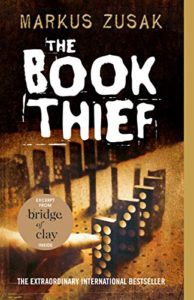 |
Markus Zusack’s The Book Thief (Knopf, 2007), narrated by Death, is the story of Liesel Meminger, living with a foster family in World War II Germany, who steals books and shares them with her neighbors and with Max, the Jewish man whom her foster parents are hiding in their basement. A wonderful read for ages 12 and up. |
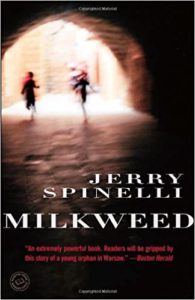 |
Jerry Spinelli’s Milkweed, set in Warsaw, Poland, during World War II, is the story of Misha, an eight-year-old orphan, who lives on the streets, survives by stealing, and wants nothing more than to become one of the magnificent German Jackboots. Then the Germans begin rounding up the Jews and imprisoning them in the Warsaw ghetto, and Misha begins to understand the brutality of war. For ages 12 and up. |
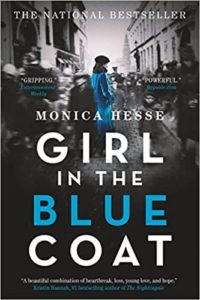 |
Monica Hesse’s Girl in the Blue Coat (Little, Brown, 2017) is set in Amsterdam during the German occupation. Hanneke, who unbeknownst to her parents has been making money by delivering black market goods, is asked by a customer to find a Jewish girl whom she has been hiding – and who has mysteriously disappeared. For ages 12 and up. |
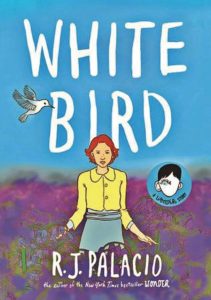 |
R.J. Palacio’s graphic novel White Bird (Knopf, 2019) is the story of young Sara Blum in German-occupied France. When soldiers come to Sara’s school to arrest the Jewish students, Sara is saved by Julien, a boy she and her classmates have teased and shunned because of his crippled condition, the result of polio. Sara is hidden in Julien’s family barn for the duration of the war – and Julien becomes her closest friend. A painful and hopeful story, beautifully done, for ages 12 and up. |
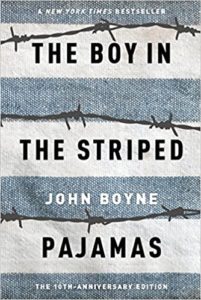 |
John Boyne’s The Boy in Striped Pajamas (David Fickling Books, 2007) is the story of two young boys, one the son of a concentration camp commandant, one – behind the barbed wire – a Jewish prisoner. The boys bond when they discover that they have the same birthday – and their affection for each other (spoiler) ends tragically. The book has received criticism for historical improbability, but pluses for emotional impact. For ages 12 and up. |
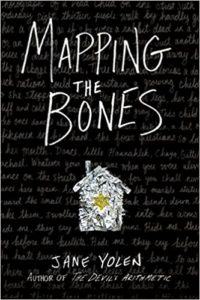 |
Jane Yolen’s Mapping the Bones (Penguin, 2019), set in 1942 in Nazi-occupied Poland, is the story of twins Chaim and Gittel, who – after a failed attempt to escape to Russia – end up separated from their parents and sent to a concentration camp where, as twins, they are at risk from the infamous Doctor Von Schneir, modeled on Josef Mengele. For ages 12 and up.
|
|
From History.com, see Why the Nazis Were Obsessed With Twins. |
|
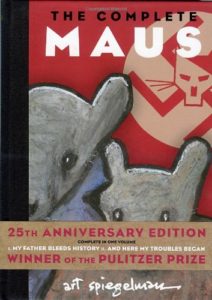 |
Art Spiegelman’s The Complete Maus (Pantheon, 1996), combines the story of Spiegelman’s difficult relationship with his father with the World War II history of his parents’ survival under the Nazis. The story is in the form of a graphic novel in which the Jews are shown as mice, the Nazis as cats. A remarkable work, and one that changed the public view of graphic novels forever. For ages 12 and up. |
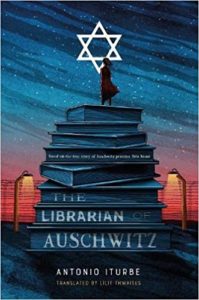 |
In Antonio Iturbe’s The Librarian of Auschwitz (Henry Holt, 2017), 14-year-old Dita, a prisoner at Auschwitz, passionate book lover, and helper in the makeshift camp school, is asked to take charge of the eight books smuggled in by inmates that comprise the camp’s entire library. If discovered, this means certain death. For ages 13 and up. The book is based on a true story. See Dita Kraus: The Librarian of Auschwitz. |
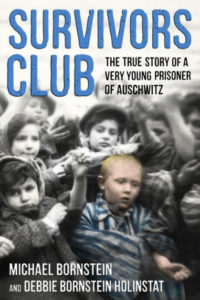 |
By Michael Bornstein, Survivors Club (Square Fish, 2019) is the memoir of one of the youngest survivors of Auschwitz – Bornstein was four years old when the camp was liberated. A heartbreaking nonfiction narrative. For ages 10-14. |
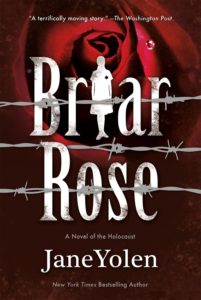 |
Jane Yolen’s Briar Rose (Tor Teen, 2016) is a re-telling of the tale of Sleeping Beauty, set in Poland during the Holocaust. Becca has grown up hearing her grandmother Gemma’s Briar Rose story. On Gemma’s deathbed, she asks Becca to promise to find the castle, the prince, and the maker of spells – which leads Becca to discover Gemma’s real history. For teens. |
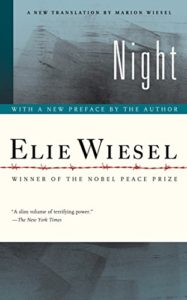 |
Elie Wiesel’s Night (Hill and Wang, 2006) is an autobiographical account of Wiesel’s survival as a teenager in Auschwitz and Buchenwald. This is the first of a trilogy; subsequent volumes are Dawn and Day. For teens and adults.
|
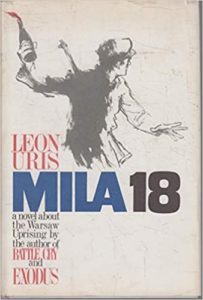 |
Leon Uris’s epic Mila 18 (Bantam, 1983) is the fictionalized story of Poland’s Warsaw ghetto uprising, when – after the Germans ordered the liquidation of the ghetto and the deportation of its inhabitants to the death camps – Jewish resistance fighters, armed with homemade weapons, held the Germans off for a month. A gripping and inspiring story for teens and adults. See Warsaw Ghetto Uprising in the Holocaust Encyclopedia. |
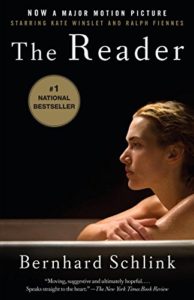 |
In Bernhard Schlink’s The Reader (Vintage, 1997), 15-year-old Michael is seduced by Hanna, a woman twice his age. Hanna then disappears, only to be discovered six years later, when Michael – now a law student – finds her on trial for war crimes as a concentration camp guard. Hanna refuses to reveal her shameful secret – that she is illiterate – and is sentenced to life in prison. For teens and adults. See The Reader Reader’s Guide for a list of discussion topics and questions. |
